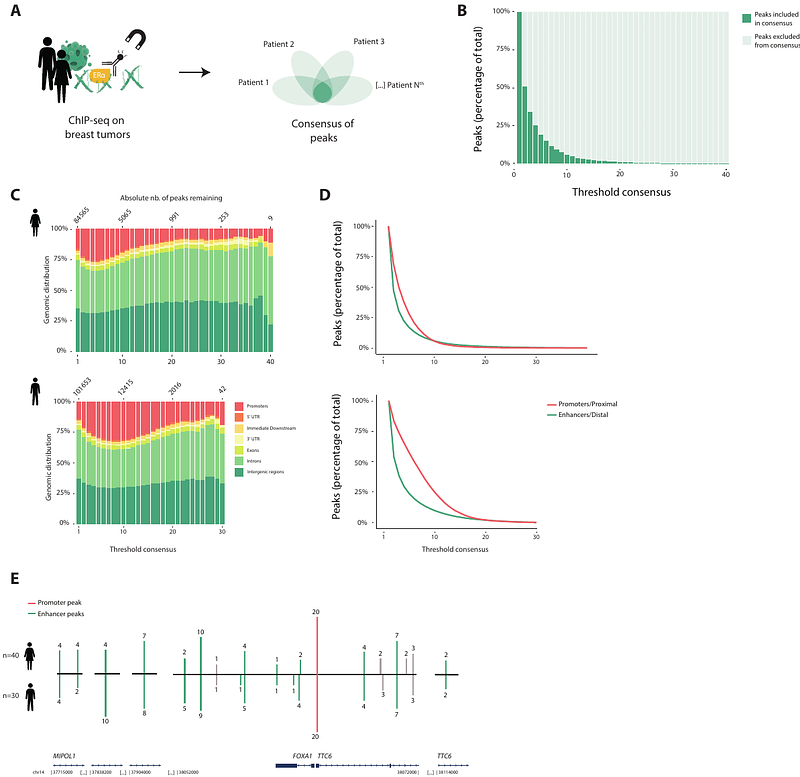Breast cancer risk SNPs converge on estrogen receptor binding sites commonly shared between breast tumors to locally alter estrogen signalling output

Breast cancer risk SNPs converge on estrogen receptor binding sites commonly shared between breast tumors to locally alter estrogen signalling output
Joosten, S. E. P.; Gregoricchio, S.; Stelloo, S.; Yapici, E.; Huang, F.; Donaldson Collier, M.; Morova, T.; Altintas, B.; Kim, Y.; Canisius, S.; Korkmaz, G.; Lack, N.; Vermeulen, M.; Linn, S.; Zwart, W.
AbstractEstrogen Receptor alpha (ER) is the main driver and prime drug target in luminal breast. ER chromatin binding is extensively studied in cell lines and a limited number of human tumors, using consensi of peaks shared among samples. However, little is known about inter-tumor heterogeneity of ER chromatin action, along with its biological implications. Here, we use a large set of ER ChIP-seq data from 70 ER+ breast cancers to explore inter-patient heterogeneity in ER DNA binding, to reveal a striking inter-tumor heterogeneity of ER action. Interestingly, commonly-shared ER sites showed the highest estrogen-driven enhancer activity and were most-engaged in long-range chromatin interactions. In addition, the most-commonly shared ER-occupied enhancers were enriched for breast cancer risk SNP loci. We experimentally confirm SNVs to impact chromatin binding potential for ER and its pioneer factor FOXA1. Finally, in the TCGA breast cancer cohort, we could confirm these variations to associate with differences in expression for the target gene. Cumulatively, we reveal a natural hierarchy of ER-chromatin interactions in breast cancers within a highly heterogeneous inter-tumor ER landscape, with the most-common shared regions being most active and affected by germline functional risk SNPs for breast cancer development.